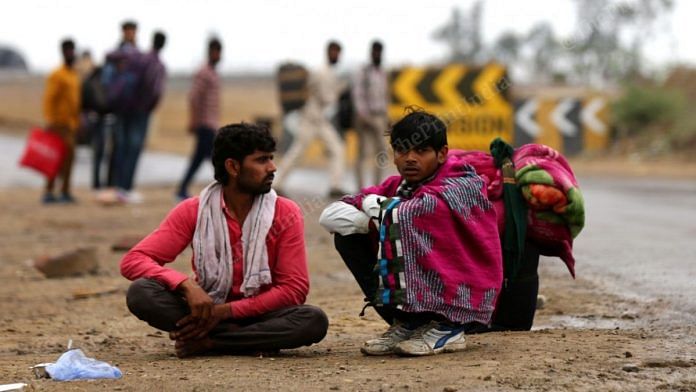The Covid-19 pandemic is exposing deep flaws in the economic model that both encourages and exploits migrant labor. Too many rich countries are dependent on low-cost workers, and too many poor communities are over-reliant on the money sent home for food, shelter and education.
Remittances to low and middle income countries will drop by a fifth this year to $445 billion, according to a recent World Bank report. That’s the worst slide in decades and a sharp turnaround from last year’s increase to a record $554 billion, which exceeded foreign direct investment in these destinations. The lender forecasts a slide of 22% in South Asia, where funds are largely bound for India and Pakistan. The Philippines, which gets 10% of its gross domestic product from such payments, could see a decline of 13%.
Waiting for paychecks from mothers, fathers, uncles and aunts abroad is an existential concern for those left at home. The faltering flow of cash is likely to mean less money is available for basic needs, especially medical care. In the Philippines, an entire ecosystem is supported by people overseas, be they maids and nannies in Singapore and Hong Kong, energy and construction workers in the Persian Gulf, or seafarers around the world. Filipinos make up about a quarter of merchant-marine staff. More than 10 million citizens, or about 9% of the population, are employed abroad at any given time.
The pandemic is producing a triple-whammy for migrants: They can’t work, they can’t go home (with airlines grounded) and they stand a greater risk of infection by staying put in their densely packed urban quarters. The bulk of Singapore’s recent surge in cases comes from dormitories built for 200,000-plus foreign laborers. In the Middle East, long a source of remittances for many parts of Asia, living conditions have been criticized as substandard.
For host countries including Saudi Arabia, South Korea, Singapore and the United Arab Emirates, leaning on migrant workers to handle the nuts and bolts of the economy is an uncomfortable byproduct of prosperity. Low fertility rates combined with graying populations has created labor shortages in the wealthiest societies. That leaves foreigners to build the gleaming towers and execute trendy home makeovers, staff hotels, busboy restaurants and maintain public transport.
Surprisingly, regional recessions and outbreaks of disease in the past have resulted in higher remittances. The diaspora digs deeper to plug holes in employment and increased health-care needs at home. The Asian financial crisis of the late 1990s, for example, didn’t hurt the Middle East or Western Europe, so wages kept getting paid. During the bird-flu pandemic in late 2003, the World Bank found that the flow of funds to the Philippines rose.
The picture was different during the global financial crisis, when things were tight everywhere. Low and middle income nations suffered a 5% dip in remittances in 2009. As dire as the 0.1% slide in the world’s gross domestic product was then, it’s dwarfed by projections for 2020. Bloomberg Economics predicts a contraction of 4%.
But even during the Great Recession, migrant workers could keep sending cash home, because some sectors of the economy remained open. People making a living in construction could, in theory, switch to retail or agriculture. Now everything is crashing simultaneously. Industries reliant on these laborers — hospitality, tourism and transport — are hit particularly hard.
Even in the best of times, these laborers endure a life of struggle. The perennial absence of parents means kids grow up thinking grandparents are their mothers and fathers, while spouses can live apart for decades. But it pays the bills, often for extended families — and sometimes for an entire village. Local governments like the arrangement because income from abroad means fewer budget outlays are devoted to the social safety net. Entire bureaucracies in the Philippines have grown up around the export of its people.
This precarious balance was apparent during a visit to the Philippines in January, just before the pandemic rippled across the globe. One young woman swore that after her experience as the child of an overseas foreign worker, she and her husband would stay in the same country. Another spoke of finding out her spouse had been unfaithful during their 18 years apart, while he was doing construction in Saudi Arabia. Both women, and many others I met, insisted on the Filipino culture of resilience. I came away admiring their pragmatism. Now, I fear for them. – Bloomberg
Also read: Modi needs to give migrant workers a ‘New Deal’ to get them back to the cities







Can’t work, can’t go, can’t stay. A virus trilemma for low-cost migrant workers abroad. And that is smart, well designed headline in a paoer. Wish all could be like this.